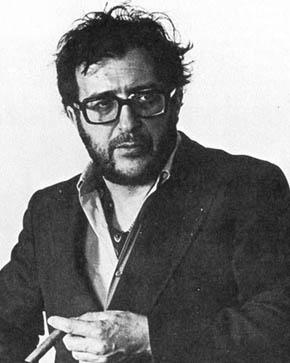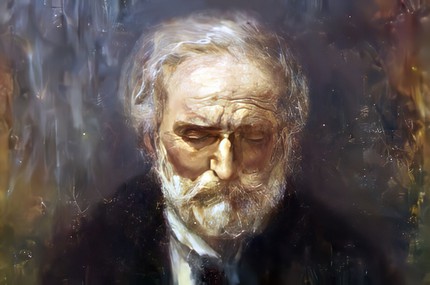
Luciano Berio |
Luciano Berio
Italian composer, conductor and teacher. Along with Boulez and Stockhausen, he belongs to the most important avant-garde composers of the post-war generation.
Born in 1925 in a family of musicians in the city of Imperia (Liguria region). After the war, he studied composition at the Milan Conservatory with Giulio Cesare Paribeni and Giorgio Federico Ghedini, and conducting with Carlo Maria Giulini. While working as a pianist-accompanist of vocal classes, he met Katie Berberian, an American singer of Armenian origin with an unusually wide range of voice, who mastered various singing techniques. She became the first wife of the composer, her unique voice inspired him to bold searches in vocal music. In 1951 he visited the USA, where he studied at the Tanglewood Music Center with Luigi Dallapiccola, who aroused Berio’s interest in the New Vienna School and dodecaphony. In 1954-59. attended Darmstadt courses, where he met Boulez, Stockhausen, Kagel, Ligeti and other composers of the young European avant-garde. Soon after, he moved away from the Darmstadt technocracy; his work began to develop in the direction of experimental theatrics, neo-folklorism, the influence of surrealism, absurdism and structuralism began to increase in it – in particular, such writers and thinkers as James Joyce, Samuel Beckett, Claude Levi-Strauss, Umberto Eco. Taking up electronic music, in 1955 Berio founded the Studio of Musical Phonology in Milan, where he invited famous composers, in particular, John Cage and Henri Pousseur. At the same time, he began publishing a magazine about electronic music called “Musical Meetings” (Incontri Musicali).
In 1960 he again left for the USA, where he was first a “composer in residence” in Tanglewood and at the same time taught at the Dartington International Summer School (1960-62), then taught at Mills College in Oakland, California (1962-65), and after This – at the Juilliard School in New York (1965-72), where he founded the Juilliard Ensemble (Juilliard Ensemble) of contemporary music. In 1968, Berio’s Symphony was premiered in New York with great success. In 1974-80 he directed the department of electro-acoustic music at the Paris Institute for Research and Coordination of Acoustics and Music (IRCAM), founded by Boulez. In 1987 he founded a similar music center in Florence called Real Time (Tempo Reale). In 1993-94 he gave a series of lectures at Harvard University, and in 1994-2000 he was a “distinguished composer in residence” of this university. In 2000, Berio became President and Superintendent of the National Academy of Santa Cecilia in Rome. In this city, the composer died in 2003.
Berio’s music is characterized by the use of mixed techniques, including both atonal and neotonal elements, quotation and collage techniques. He combined instrumental sounds with electronic noises and the sounds of human speech, in the 1960s he strove for experimental theater. At the same time, under the influence of Levi-Strauss, he turned to folklore: the result of this hobby was “Folk Songs” (1964), written for Berberyan. A separate important genre in the work of Berio was a series of “Sequences” (Sequenza), each of which was written for one solo instrument (or voice – like Sequenza III, created for Berberian). In them, the composer combines new composing ideas with new extended playing techniques on these instruments. As Stockhausen created his “keyboards” throughout his life, so Berio created 1958 works in this genre from 2002 to 14, reflecting the specifics of all his creative periods.
Since the 1970s, Berio’s style has been undergoing changes: elements of reflection and nostalgia are intensifying in his music. Later, the composer devoted himself to opera. Of great importance in his work are arrangements by other composers – or compositions where he enters into a dialogue with other people’s musical material. Berio is the author of orchestrations and transcriptions by Monteverdi, Boccherini, Manuel de Falla, Kurt Weill. He owns the completion versions of Mozart’s operas (Zaida) and Puccini’s (Turandot), as well as a “dialogue” composition based on fragments of the begun but unfinished late Schubert symphony in D major (DV 936A) entitled “Reduction” (Rendering, 1990).
In 1966 he was awarded the Prize of Italy, later – the Order of Merit of the Italian Republic. He was an honorary member of the Royal Academy of Music (London, 1988), an honorary foreign member of the American Academy of Arts and Sciences (1994), a laureate of the Ernst von Siemens Music Prize (1989).
Source: meloman.ru





